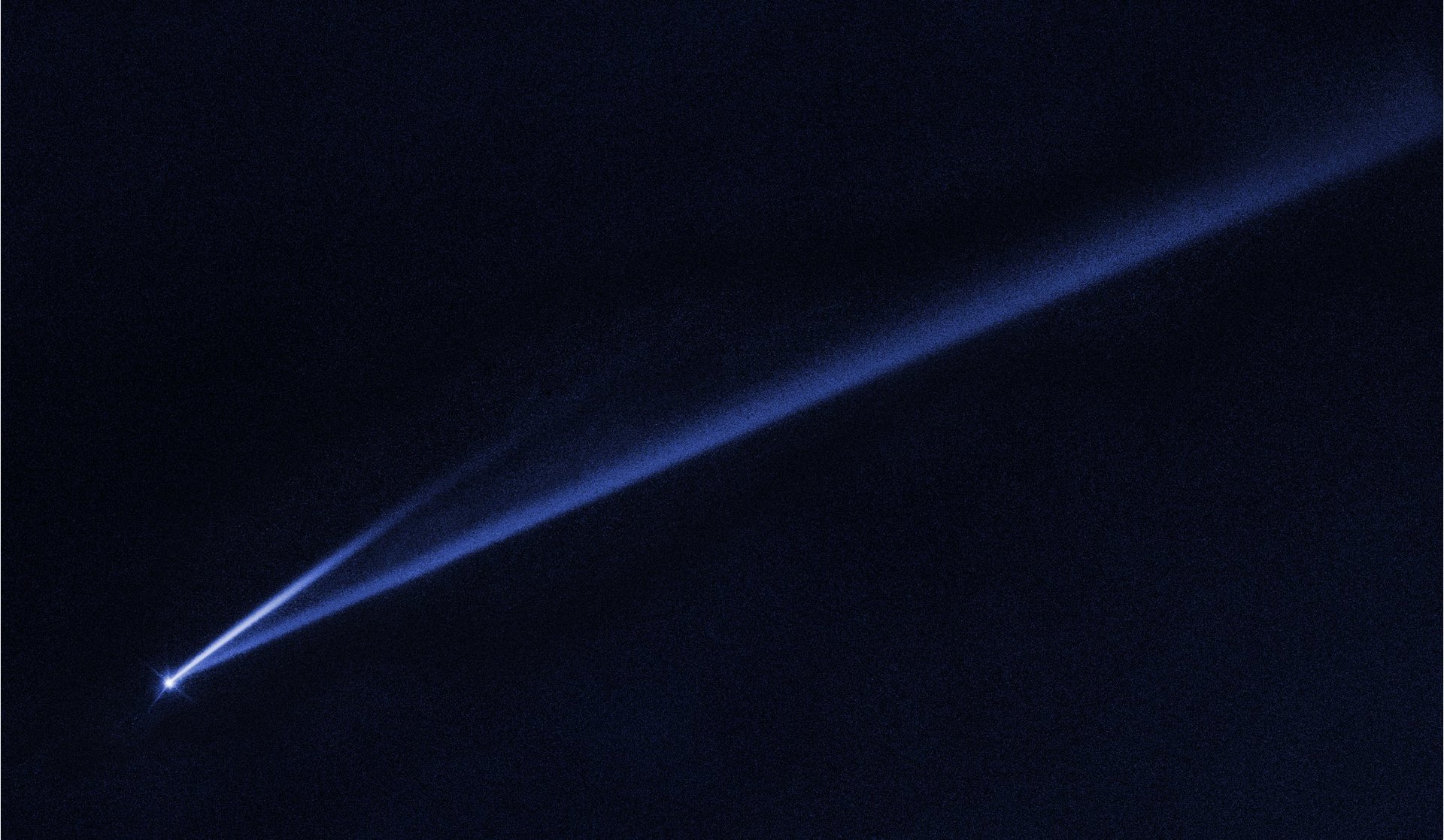The Hubble Space Telescope captured a rare image of a disintegrating asteroid
A beautiful image just released by the Hubble Space Telescope shows Gault, a very small (by galactic standards) asteroid furiously spinning through the asteroid belt between Mars and Jupiter, and coming apart in the process.


A beautiful image just released by the Hubble Space Telescope shows Gault, a very small (by galactic standards) asteroid furiously spinning through the asteroid belt between Mars and Jupiter, and coming apart in the process.
It’s worth noting that this process has been happening very slowly. Researchers believe it may have started between 10 and 100 million years ago. Pressure from sunlight slowly sped up Gault’s rotation, making it increasingly unstable. Evidence of its slow disintegration can be seen in its glowing tails, the longest of which measures 500,000 miles long. Gault is only 2.5 miles (four kilometers) across.

In a release by Queens University Belfast, European Southern Observatory researcher Olivier Hainaut noted how new technology has made it easier to catch these rare, fleeting celestial moments.
“Active and unstable asteroids such as Gault are just now being detected because of new survey telescopes that scan the entire sky, which means asteroids that are misbehaving such as Gault cannot escape detection anymore.”